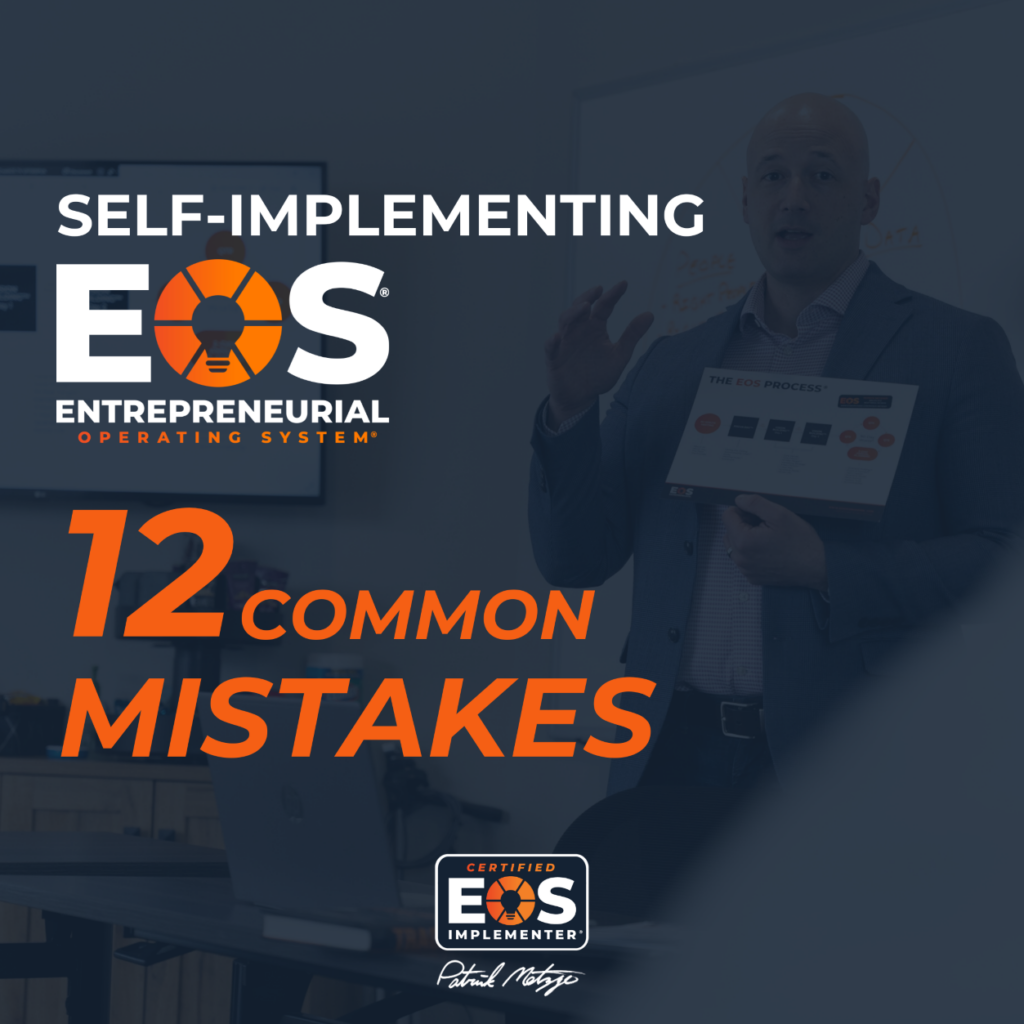Implementing the Entrepreneurial Operating System® (EOS) can transform a business, but it’s easy to fall into traps that limit its effectiveness when self-implementing as a company. As a Certified EOS Implementer®, I’ve had the privilege of working with numerous companies that were initially self-implementing. Overall, I’ve seen recurring issues that could easily have been avoided with expert guidance. Here are 12 of the biggest mistakes I see—and how you can prevent them.
The Accountability Chart® Is People-Focused
EOS founder Gino Wickman says, “The root of all evil in an organization lies in the Accountability Chart.” Yet, many businesses fall into the trap of building their Accountability Chart around specific individuals, basing roles on people’s talents rather than on the true needs of the business. The danger here? When those individuals leave, so does the structure. A bulletproof Accountability Chart focuses on function—not on personalities—creating a robust system that can weather any staffing changes. An experienced Implementer can help design a structure that is sustainable and scalable.
Delegate and Elevate® Got Missed
The tool that’s supposed to empower leaders to delegate and rise to their unique abilities is often glossed over. Companies have sometimes introduced the concept from the book Traction, but they have failed to implement it properly across the leadership team and beyond. The result? Leaders stay stuck in the weeds and wonder why. Effective delegation begins at the top and cascades down the organization. As an Implementer, I ensure that your leadership team has effectively gone through the tool with full understanding, as well as have strong understanding of how to rollout the tool throughout next levels.
Stopping at the Foundational Tools
Many businesses think that once the leadership team is using the Foundational Tools, they’re running on EOS. In reality, Traction only scratches the surface. There are so many additional tools and strategies that can only be fully utilized with the guidance of a trained EOS Implementer®. When your team masters the entire EOS toolbox with expertise, it empowers your organization to solve problems faster, foster accountability and achieve sustainable growth.
L10 Meetings® Are More Like L7 Meetings
The L10 Meeting is the heartbeat of a successful team. Unfortunately, when teams self-implement, these meetings are often diluted or deprioritized, becoming a reactive, less impactful version of what they really should and are intended to be. Consistently running effective L10s drives accountability, improves team health and develops better problem-solving. A trained Implementer ensures these meetings become a consistent, powerful engine for driving progress.
Rolling Out Tools Too Quickly (or Not at All)
Self-implementing companies often fail to roll out EOS tools effectively. Some rush into implementing tools without truly mastering them at the leadership level. Others neglect to cascade the tools beyond the leadership team. Either approach leaves employees confused and disengaged. A systematic, expert-guided rollout ensures that tools are implemented at the right pace and with full understanding across all levels of the company.
Overloading Priorities—Improper Compartmentalization
One of the key strengths of EOS is its ability to simplify and focus an organization. However, many self-implementing companies struggle to compartmentalize and prioritize initiatives effectively. They still continue to spread themselves too thin, tackling too many issues at once, just as they’ve always done. With stronger guidance, companies gain a laser focus on the highest-impact priorities, learning to say “no” to distractions and achieve more by doing less.
The 5 Leadership Abilities® Get Overlooked
While self-implementers may read about the 5 Leadership Abilities in Traction, they rarely gain a deep understanding of how to apply them in practice. These abilities—simplify, delegate, predict, systemize and structure—are the key to breaking through the ceilings that hold companies back. I help teams tap into these abilities through tailored exercises and reflection on their own organization’s journey, empowering them to identify breakthrough moments and continually drive growth.
Scorecards Are Incomplete
When accountability is still lacking, it’s typically because the Scorecard is missing proactive leading indicators and it’s failing to truly show what defines success for the organization. Great Scorecards take months to develop many times, and that isn’t even including the ones that need to exist at lower levels of the organization. When Scorecards are effectively implemented and being used, the organization is able to see into the future, quickly identify issues and they’re seeing their leaders at all levels solve their own issues, effectively taking the load off the leadership team.
Weak Communication of the VTO®
The VTO is an incredibly powerful tool when used correctly. Many companies create a VTO but fail to provide enough depth within it and also communicate it effectively throughout the organization. As a result, employees don’t fully grasp the vision or how they fit into it. I ensure that VTOs are comprehensive, challenging teams to refine their vision and guide companies in effectively communicating it to every employee through a robust State of the Company Address.
Processes Are Too Complicated
Clear, simple and documented core processes at a high-level first and foremost are often overlooked with SOPs taking up too much of the focus. It’s only when we back a company up and look at processes from a higher altitude and through a larger lens are the true hiccups in the handoffs really found and able to be corrected. Also, defined training and revision plans for processes is often missing.
Team Health Takes a Back Seat
Building a healthy, high-performing leadership team takes more than just the EOS tools. It requires vulnerability, trust and intentional team-building efforts. Self-implementers may miss out on this critical aspect of team health, limiting their potential. Through trust-building exercises and vulnerability-based leadership coaching, I help teams create seismic shifts in their organizational health, helping them make the leap from good to great.
IDS® Isn’t Used to Its Full Potential
Companies often improve their issue-solving abilities with EOS, but they rarely master the IDS (Identify, Discuss, Solve) process on their own. When teams learn to tee up issues concisely and apply the right tools from the EOS Model® at the right moments, problem-solving becomes surgical. I train teams to bring precision and preparation to their L10s, transforming the way they solve issues and create lasting solutions.
Why Partnering with a Certified EOS Implementer® Makes the Difference
While self-implementing EOS may bring some positive changes in your organization, these common mistakes are what often separate good results from great ones. A formally and professionally trained EOS Implementer® brings an outside perspective, deep expertise in the tools and system and a proven process that ensures you’re maximizing the full power of EOS.
Let’s have a conversation about how we can take your implementation to the next level and grow your business and people to the next stage!



